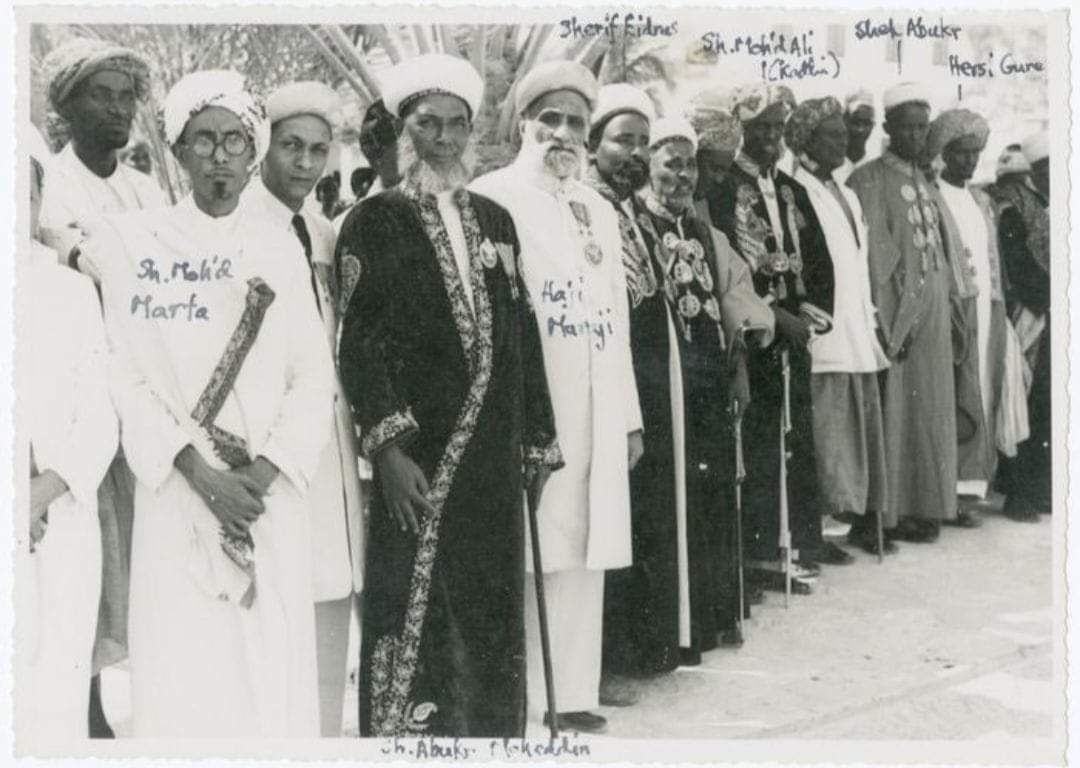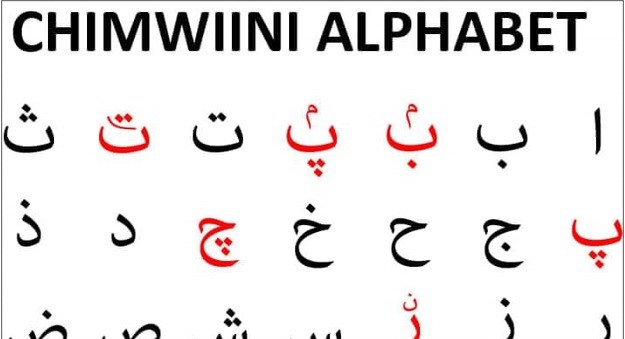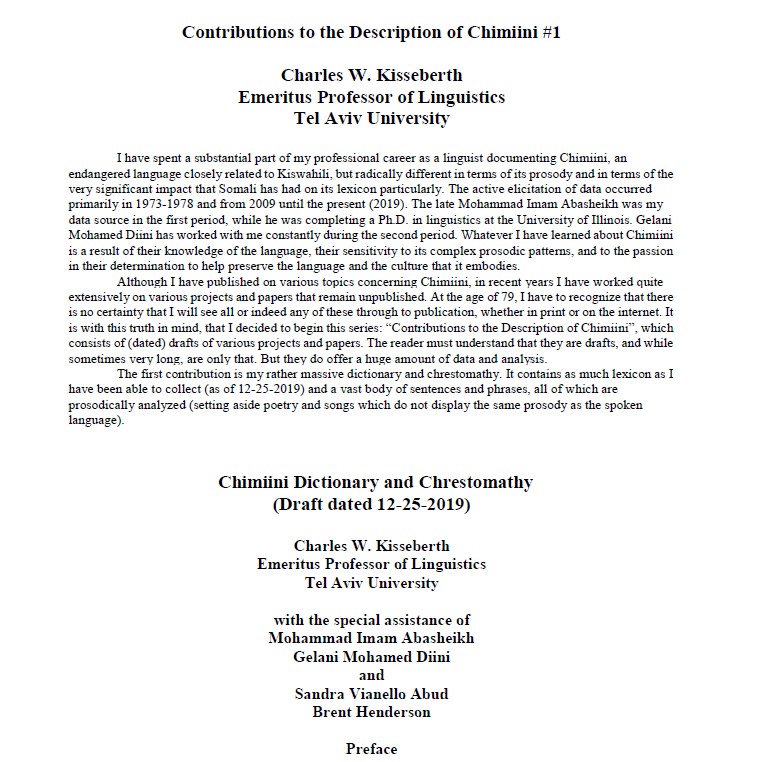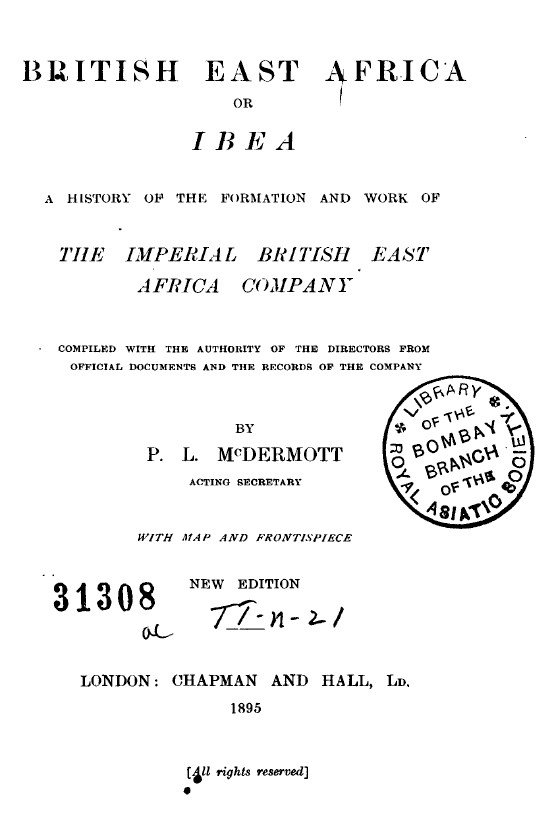“Perhaps there is no disorientation more radical than the uprooting of those who live exiled in their homeland and fight a daily struggle, made up of small gestures to safeguard and protect the places that could be taken from them, not by those coming from outside, but by those who live inside like a dead soul.”
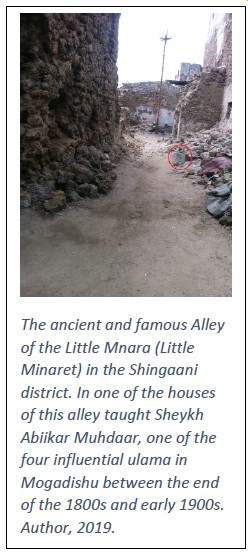
The words of the great Italian anthropologist Vito Teti deserve a better translation than mine but I hope that they nevertheless however help to convey the meaning of my message. The alley about which I am trying to attract everyone’s attention does not have a name and I gave it a temporary one that is “The Alley of the Little Mnara (Luuqa Mnaarada Yar in Somali)”. In this alley, there is a small damaged artifact whose history is lost in the mists of time. Almost certainly rebuilt several times. It is part of the memories of many generations and always generates lively discussions about its origin of which no one is quite sure. Among all the stories that I have heard about this artifact the most accredited is that in the place where in which it is located, a “light” was noticed and this light is linked to the apparition of the prophet Khadar. It is for this “apparition” that the Little Minaret was built there. Despite being fascinated by these kinds of stories that give vitality to many places that would otherwise be ignored, I would suggest to reflect on another hypothesis that I will illustrate below. This artifact could be a funerary monument. The funerary monuments, scattered among the southern islands of Banaadir, constitute testimonies of great interest regarding their origin. Despite a lack of inquiries made on the land, some observations can be put forward. If we take into consideration the tomb with a niche for the offering of incense, we notice that it is nearly identical to the one designed by the famous English scholar Serjeant, who informs us that:
“All about the Bastards Rock [ Hajar to the Zinwaan ] there are little heaps of stones built up on individual rocks; these our driver called mad’a (pl. mada’i). The mada’i have been described by Landberg as defining the limits of a type of sacred enclave, but this is perhaps not always so. At Khanfar of Abyan in 1947 I saw various types of mad’a haqq al-wali, stone or mud pillars with a hole in the top for a lamp[…] These pillars with a hole at the top for a lamp are common enough in many districts of the Aden Federation.”
The funerary monument of Chula is practically identical to the one designed by Serjeant and brought back, known as bakrah, to which he once again points out:
“[…] a mad’a may be set up for any person, but a bakrah was set up for a wali exclusively, i.e. for a saint.”
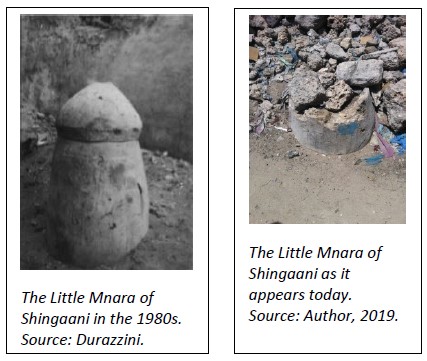
The ancient tombs of the Baajuuni Islands lead us to Yemen and not to other parts of the world. As stated above, it appears that nobody knows when or by whom it was constructed. Some believe it to be a phallic monument of pre-Islamic age. This seems to me an exaggeration. However, I think that the term phallic monument, with regards to a Muslim environment, is used very cautiously. We have seen that monuments of this kind exist in Yemen, and are dedicated to religious personalities of a certain importance. Funerary turrets are also found, called turbe, in Turkey and Iran, with sharpened roofs that can resemble the phallus, but that are not even remotely inspired by it, but rather by the tents of the nomads.
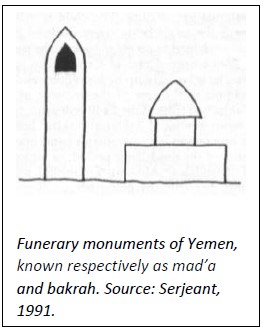

Written By Nuredin Hagi Scikei
Sources:
Serjeant R.B., Customary and Shari’ah Law in Arabian Society, Variorum, London, 1991, X, p. 79.
Carel J. Du Ry, L’arte nell’Islam, Rizzoli, Milano, 1972, p. 90.




